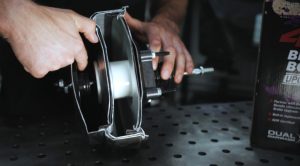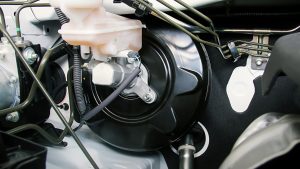The brake booster is an essential part of your vehicle’s braking system, designed to reduce the amount of effort needed to press the brake pedal. By using engine vacuum (or an electric pump in some modern cars), it multiplies the force applied by your foot, ensuring smooth and efficient braking.
While brake boosters are generally durable, they can still fail prematurely if neglected. Fortunately, with proper maintenance, you can significantly extend their lifespan and ensure your vehicle remains safe to drive.
In this article, we’ll cover why brake booster maintenance matters, the symptoms of wear, and practical tips to keep it in top condition.
Why Brake Booster Maintenance Matters

Neglecting the brake booster can lead to:
-
Reduced braking efficiency — requiring more force to stop the car.
-
Increased stopping distances — especially dangerous in emergencies.
-
Damage to other brake components — putting more strain on the master cylinder and brake lines.
-
Higher repair costs — boosters are expensive, and failure often affects related parts.
Common Symptoms of Brake Booster Problems
| Symptom | Possible Cause |
|---|---|
| Hard brake pedal | Vacuum leak or internal diaphragm damage |
| Hissing noise when braking | Vacuum line leak |
| Increased stopping distance | Loss of power assist |
| Brake warning light | Low vacuum pressure or sensor fault |
| Engine stalling when braking | Severe vacuum leak affecting air-fuel mixture |
If you notice any of these signs, your brake booster may need immediate attention.
Maintenance Tips to Extend Brake Booster Life
1. Regularly Check for Vacuum Leaks
-
Inspect the vacuum hose connected to the brake booster for cracks or loose fittings.
-
Replace damaged hoses immediately to prevent loss of power assist.
2. Keep the Brake Fluid Clean and Full
-
Even though the booster mainly uses vacuum, it works closely with the hydraulic brake system.
-
Dirty or low brake fluid can damage seals and increase wear.
3. Listen for Unusual Sounds
-
A constant hissing noise may indicate a vacuum leak.
-
Addressing it early can prevent total booster failure.
4. Avoid Riding the Brakes
-
Continuous light pressure on the brake pedal can strain the booster and related components.
-
Use engine braking when possible to reduce wear.
5. Inspect During Routine Brake Service
-
Whenever pads, rotors, or brake fluid are serviced, have the booster checked for proper function.
Preventive Maintenance Schedule
| Interval | Maintenance Task |
|---|---|
| Every 6 months | Inspect vacuum hoses and connections |
| Every 12 months | Check brake fluid level and quality |
| Every 24 months | Replace brake fluid to prevent corrosion |
| As needed | Replace damaged hoses or faulty check valves |
DIY Brake Booster Test
You can check the booster’s function at home:
-
With the engine off, press the brake pedal several times to release stored vacuum.
-
Hold the pedal down and start the engine.
-
If the booster is working, the pedal should move downward slightly as the engine starts.
If the pedal doesn’t move, the booster may not be functioning correctly.
When to Replace the Brake Booster

You should consider replacing the booster if:
-
The pedal is consistently hard to press.
-
Braking feels weak even with sufficient fluid and good pads.
-
Vacuum leaks persist despite hose replacement.
-
The booster diaphragm is damaged internally.
When replacement is necessary, always choose a high-quality unit to ensure safety and long service life. You can buy Brake Booster online from trusted suppliers to guarantee compatibility and reliability.
Final Thoughts
Brake boosters are robust, but they benefit greatly from preventive maintenance. By checking vacuum hoses, maintaining clean brake fluid, and addressing small issues early, you can extend the life of your booster and keep your braking system working at its best.
A well-maintained brake booster not only ensures smoother, safer stops but also prevents costly repairs down the road.